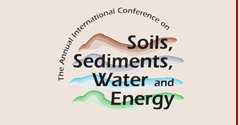Abstract
Urban stormwater runoff is being recognized as a major source of pollutants to receiving waters and a number of recent investigations have evaluated stormwater runoff quality and best management practices to minimize pollutant input to receiving waters. Particle-bound contaminants are widespread in the urban environment causing impairment to urban water bodies such as streams and lakes. Non-point sources significantly contribute to this impairment, which occur in a variety of urban media. Trace elements associated with stormwater runoff are one group of contaminants identified in urban aquatic sediments (Van Metre and Mahler, 2003). In the aquatic environment, heavy metals are distributed among water-soluble species, colloids, suspended matter and sedimentary phases; deposition-mobilization processes play an important role in influencing the concentration of metals in water and sediments (Filgueiras et al., 2004). The primary objectives of this research are to investigate the particulate association (20 to 0.4 µm) of heavy metals in stormwater runoff generated from parking lots and rooftops, to assess the removal of particulate-bound and soluble heavy metals by wet pond and cattail wetland mesocosms, and to examine any seasonal variability. The secondary objective is to study the solid-phase fractionation of these heavy metals in wetland sediments by selective sequential extraction procedures for a qualitative assessment of heavy metal bioavailability. Early studies investigated the relative removal of heavy metals in stormwater in different particulate size classes using structural best management practices. The following heavy metals were investigated: Aluminum (Al), Chromium (Cr), Copper (Cu), Iron (Fe), Manganese (Mn), Lead (Pb), and Zinc (Zn). Preliminary results for the sampling events conducted in April and June 2005 are presented in this paper.
Recommended Citation
Muthukrishnan, Swarna
(2010)
"Treatment Of Heavy Metals In Stormwater Runoff Using Wet Pond And Wetland Mesocosms,"
Proceedings of the Annual International Conference on Soils, Sediments, Water and Energy: Vol. 11, Article 9.
Available at:
https://scholarworks.umass.edu/soilsproceedings/vol11/iss1/9
